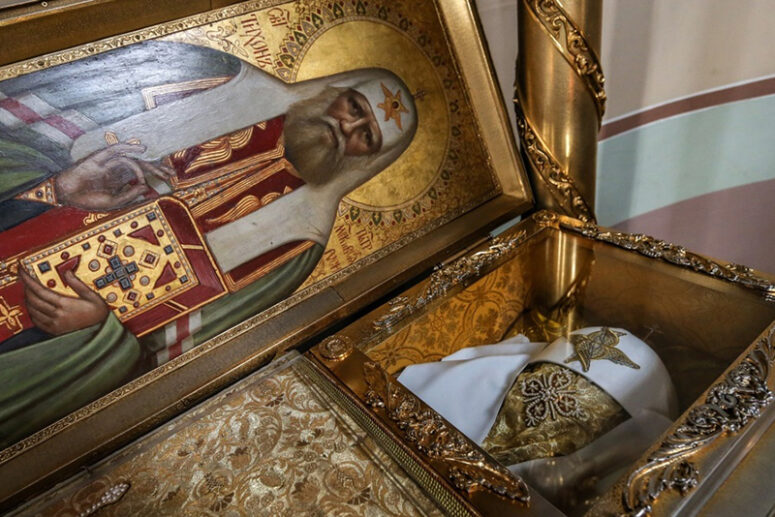
Yes, there are. One of them is the radiocarbon method, which can be used to date the age of relics. Any organic matter contains carbon, which begins to decay at a certain rate from the moment of death of a biological creature (the so-called half-life). Scientists measure the amount of carbon remaining in the object under study and then compare it to the calculated initial amount. It is thus possible to determine the approximate date of death, by the amount of the decayed carbon. This method was successfully used during the study of the head of St John the Baptist in Amiens (France). It showed that the skull was about 2,000 years old. There is also anthropological analysis, which was also used during these studies. (Anthropology is the scientific study of humanity, concerned with human behavior, human biology, cultures and societies, in both the present and past, including past human species — editor’s note). It showed that the head belonged to a person between 35-45 years of age, and represented the Semitic type of skull, which provided additional proof of its authenticity.
An additional individual historical and canonical analysis can also be used. It is carried out on the basis of a complex of various historical documents and archaeological artefacts. In particular, such an analysis may be required to confirm the exclusive right of a particular city or diocese to hold the relics of this or that saint. For example, such a historical and canonical analysis, was used to confirm that the relics of the apostles Peter and Paul were really found in Rome, which made this city the “homeland” of these holy relics. However, such an analysis is not always possible. In the 2000 years of church history, with all the upheavals, the fall of empires, the crusades and other events, it is sometimes extremely difficult to determine the path of a particular shrine. Sometimes researchers only have scraps of indirect information, which can be used to restore the history of the relics.
It is important to note, however, that the church conscience has always relied on the testimonies of its Tradition, and such trust was always justified. All scientific research data have always been considered as auxiliary arguments with no decisive role in determining the authenticity of relics. Many characters and passages from the Holy Scriptures have been questioned by the scientific community for a long time. However, the archaeological discoveries of the 20th century dispelled most of these doubts. We do not know what will be revealed tomorrow, but the church does not need a magnifying glass or any measuring devices to know her saints better than anyone else. In recognizing the authenticity of relics the Church relies on the decisions of its councils and public veneration.
Do Christians conduct any research on relics?
Yes. The Roman Catholic Church initiated an extensive commission after the Second Vatican Council (1962 – 1965), which was supposed to determine the authenticity of all relics and shrines kept in churches and monasteries. In 10 years all the documents related to the history of each shrine were rechecked and verified. As a result of that work, all relics and shrines were separated into whose origin and authenticity could be documented and those that we can honor only by faith.
The Orthodox Church has also resorted to such research. For example, this year marks the 25th anniversary of the second acquisition of the relics of the Venerable Seraphim of Sarov, stolen by the authorities during the Soviet period. There used to be almost no hope of finding these holy remains. When these relics were found in 1990 in the Museum of Atheism and Religion, a commission was created that led anthropological and historical canonical analyses, which proved that the found remains were the relics of the Venerable Seraphim of Sarov. Conflicting evidence about the research of the remains of the Royal Family is constantly appearing in the media.
It is important to note once again that neither Catholic nor Orthodox Church has ever used these studies as the criteria for determining the authenticity of the relics. The church always retains the final decisive word as the keeper of holiness and (therefore) capable of recognizing it.
Source: https://foma.ru/kto-i-zachem-razdelyaet-moshhi-svyatyih-na-chastitsyi.html (abridged)




